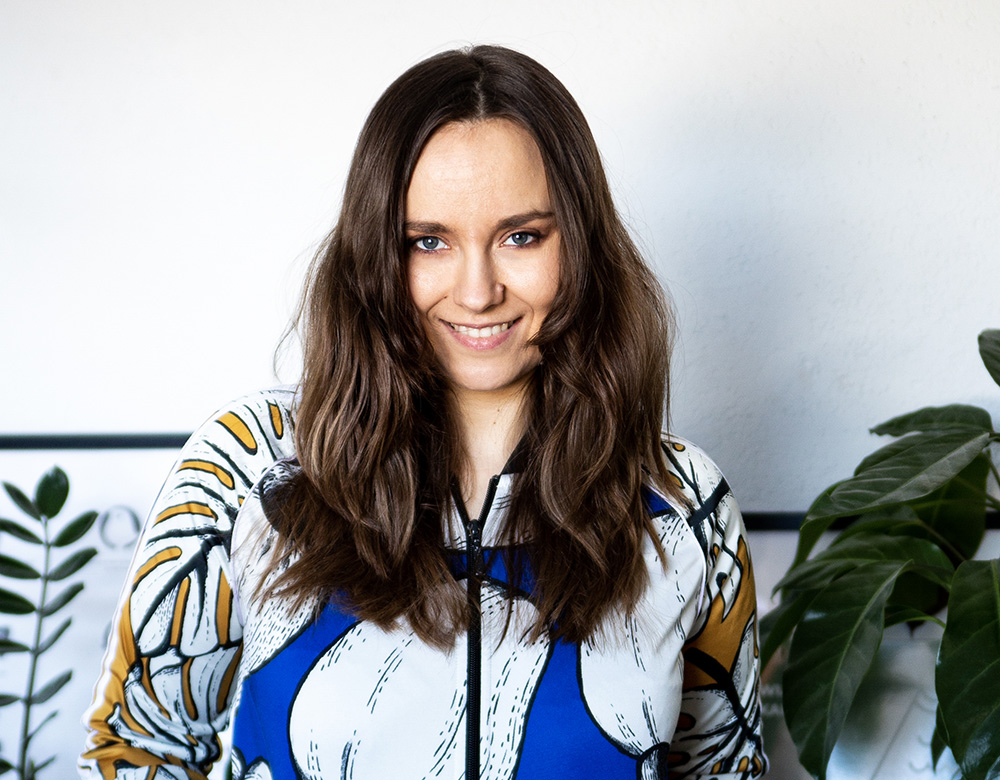Małgorzata
Year of birth: 1984.
Where do you live: Gdańsk, Poland.
Your education: BA in Graphic Design from the Academy of Fine Arts in Gdańsk, Postgraduate Studies in Project Management, and a Master’s Degree in Marketing from the University of Gdańsk.
Describe your art in three words: Based on assumptions.
Your discipline: Graphic Design.
Website | Instagram
Can you share the story behind your decision to specialize in visual identification systems? What inspired this direction in your work?
When it comes to design, I’m all about systems that connect the dots. I’m constantly on the lookout for ways to translate my clients’ needs into a visual language that speaks volumes. The more variables, the better. The beauty lies in finding the system within the chaos.
So, my decision to dive into visual identification systems wasn’t random. It came from a need to create designs that don’t just look cool, but actually work—in a functional way that communicates a brand’s true vibe and solves real problems. It’s oddly satisfying when everything clicks, when the system works seamlessly from concept to execution. For me, that’s the perfect blend of logic, strategy, and creativity that leads to consistency. And, at the end of the day, let’s not forget about the fun part. (Because there’s always fun in funky.)
How did your background in both graphic design and marketing shape your approach to projects?
Both specializations have given me a cross-disciplinary approach to my work, allowing me to get the best of both worlds. Graphic design sharpens my eye for crafting with precision and style, project management taught me how to navigate the process, and marketing gave me the ability to step back and see the bigger picture—how designs truly perform. So, every project exists in a 3-dimensional space between creative vision, process, and strategic thinking.
 What led you to found Funky Studio, and what is the studio’s mission or philosophy?
What led you to found Funky Studio, and what is the studio’s mission or philosophy?
Starting Funky Studio was a no-brainer for me. I needed a space to fully embrace my design philosophy—what I like to call „optimalism”—which celebrates clean, essential design and focuses on both form and function. My goal is to create designs that are not only visually striking but also rooted in structure and logic, with a reason behind every decision. It’s all about blending creativity with functionality, aiming for good form and fun. (Because, F stands for fffffunky!)
Your design style emphasizes modular grids and a balance between abstraction and readability. How do you develop and refine these principles in your projects?
I kick off every project by diving deep into the client’s core message and goals, building a list of assumptions. From there, I set up a modular grid system that strikes a balance between flexibility and structure. The grid becomes the backbone of everything: logos, ID systems, illustrations, animations, ect. This structured foundation lets me play with form without losing sight of clarity, while also being responsive. Abstraction is where creativity flows in a visually appealing form, while readability ensures the message stays sharp and clear. I like to position the point of view right in the middle of these two opposites. (And that’s what makes it both fun and funky.)
 The ‘less is more’ approach is central to your work. How do you ensure functionality while maintaining visual appeal?
The ‘less is more’ approach is central to your work. How do you ensure functionality while maintaining visual appeal?
For me, the ‘less is more’ approach is all about stripping away the unnecessary and keeping only the essentials that truly communicate the needs ending up in „optimalism”. To keep things optimal, I rely on a grid—providing structure, black-and-white contrast—offering balance, and geometry—striking the right balance between readability and abstraction. Each project is an experiment, built on plenty of assumptions along the way to see how it plays out in the end.
Your POLISH TOWNS project demonstrates your unique style. Could you tell us more about the creative process behind this project?
The „Polish Towns” project kicked off with playful slogans that captured the vibe of both small and bigger towns across Poland. I’ve always had a thing for urban vibes—there’s something about discovering the unique DNA of a city that really tickles my creativity.
This project gave me the opportunity to blend cultural heritage with modern, yet playful design. It started with research into the architecture and quirks of each town. The magic happened when I started playing with mathematics—using modular grids, scale, tangents to the circle—to create interest, all while keeping things almost primitive in their simplicity and cleanliness. It was also the perfect playground to experiment with characters by geometricizing figure sculptures as well. Capturing it all with the playful copy—that was it.
How does your experience as a former lecturer in psychophysiology of vision influence your design process?
I’ve always had a soft spot for mathematics, but teaching Psychophysiology of Vision at the Academy of Fine Arts was a game-changer for me. It taught me the importance of optical improvement in my work. My designs are no longer as analytically rigid or mathematical, but they still carry that experimental edge. It also taught me how we perceive and process visual info. I’m always thinking about things like how our brain interprets shapes, colors and spacing creating all sorts of illusions. And that’s how it influenced my design process.



Leave a Reply